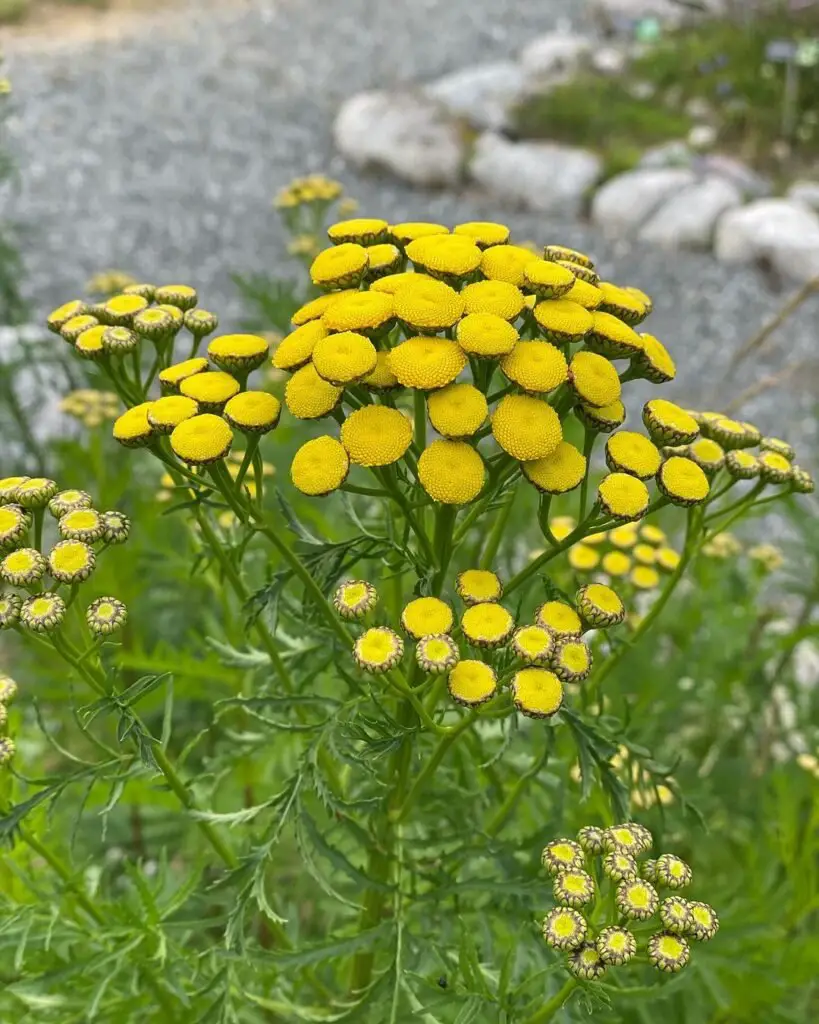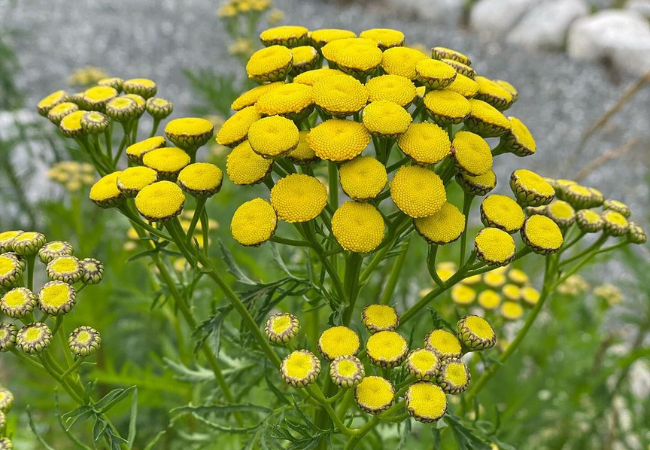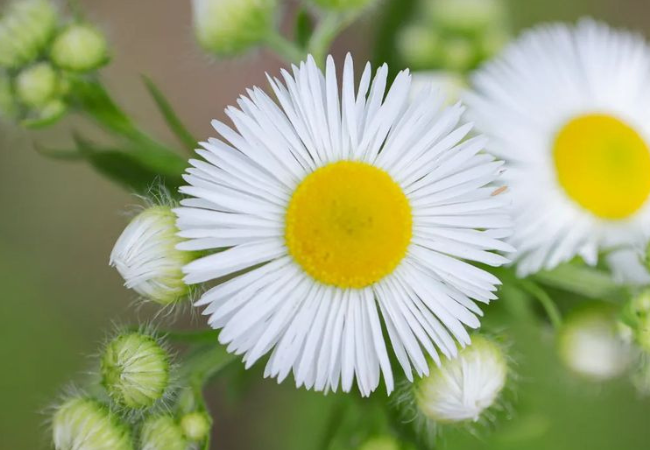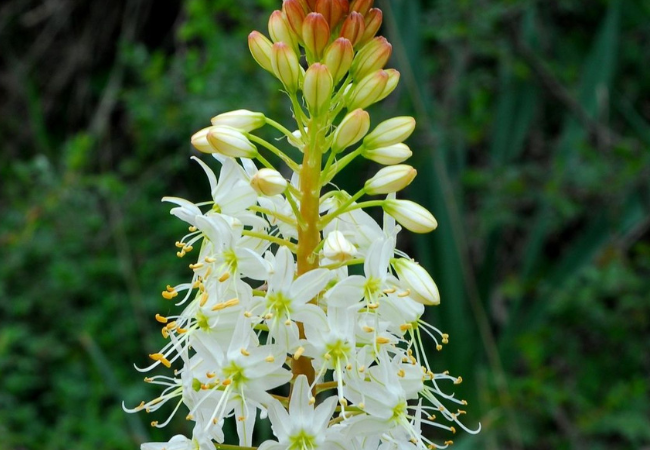Discover the Tansy Flower: Learn about its history, uses and how to grow this unique plant. Explore the benefits and potential risks of this traditional herb.
Tansy is a flower with an interesting past and many uses. This article will teach you all about tansy, from how it looks to how to grow it. We’ll also talk about why people like this plant and some things to be careful about.
Here’s the information chart specifically for Tansy (Tanacetum vulgare):
| Category | Information |
|---|---|
| Botanical Name | Tanacetum vulgare |
| Common Name | Tansy |
| Plant Type | Herbaceous perennial |
| Hardiness Zone | Zones 4-9 |
| Sun Exposure | Full sun to part shade |
| Soil Type | Well-draining, average fertility |
| Watering | Low to moderate |
| Growth Habit | Upright, bushy |
| Height/Spread | 2-3 feet tall, 1-2 feet wide |
| Special Features | Yellow button-like flowers, aromatic foliage, deer and rabbit resistant, attracts beneficial insects |
What is Tansy?

Tansy (Tanacetum vulgare) is a flowering plant that’s been around for a long time. It has bright yellow flowers that look like buttons. The leaves are green and smell strong when you touch them.
For more information about tansy’s classification, visit the USDA Plants Database.
Tansy’s Interesting History
People have used tansy for hundreds of years:
- In the old days, they put it in food to keep bugs away.
- Some people used it as medicine, but we know now that can be dangerous.
- Farmers used it to help keep pests away from their crops.
Learn more about the history of herb use from the National Institutes of Health.
How to Grow Tansy
If you want to grow tansy, here’s what you need to know:
Planting:
- Plant tansy in spring after the last frost.
- Choose a spot with full sun or partial shade.
- Space plants about 2 feet apart.
Soil:
Tansy isn’t picky about soil, but it likes it to drain well.
Water:
- Water regularly when the plant is young.
- Once it’s growing well, tansy doesn’t need much water.
Care:
- Cut back the plant after it flowers to keep it tidy.
- Watch out – tansy can spread quickly!
For more gardening tips, check out the Cooperative Extension System.
Uses for Tansy
While tansy has been used for many things in the past, today it’s mostly grown for:
- Gardens: Its yellow flowers look nice in flower beds.
- Dried flowers: The flowers keep their color when dried.
- Pest control: Some gardeners plant it to keep bugs away.
- Dyes: The flowers can be used to make yellow dye.
Learn about using plants for natural dyes from the Smithsonian Gardens.
Things to Be Careful About
It’s important to know that tansy can be harmful:
- Don’t eat any part of the tansy plant. It can be poisonous.
- Pregnant women should avoid touching tansy.
- It can cause skin irritation in some people.
- Tansy can spread quickly and become a weed in some areas.
For more information on plant safety, visit the National Capital Poison Center.
Benefits of Tansy
Even though we need to be careful with tansy, it has some good points:
- It’s easy to grow and doesn’t need much care.
- The flowers are bright and cheerful.
- It can help keep some pests away from other plants.
- Tansy is interesting to learn about because of its long history.
Learn more about beneficial plants from the USDA Natural Resources Conservation Service.
Tansy in Your Garden
If you decide to grow tansy:
- Plant it where it can’t spread too much.
- Keep it away from vegetable gardens.
- Enjoy its bright flowers in the summer.
- Remember to handle it carefully.
For more advice on garden planning, visit the National Gardening Association.
Tansy is a plant with a fascinating history and bright, cheerful flowers. While it’s not for eating and needs careful handling, it can be an interesting addition to your garden. Just remember to keep it under control and enjoy its sunny blooms from a safe distance!
For more gardening tips and plant care guides, visit usagardenhub.com.






